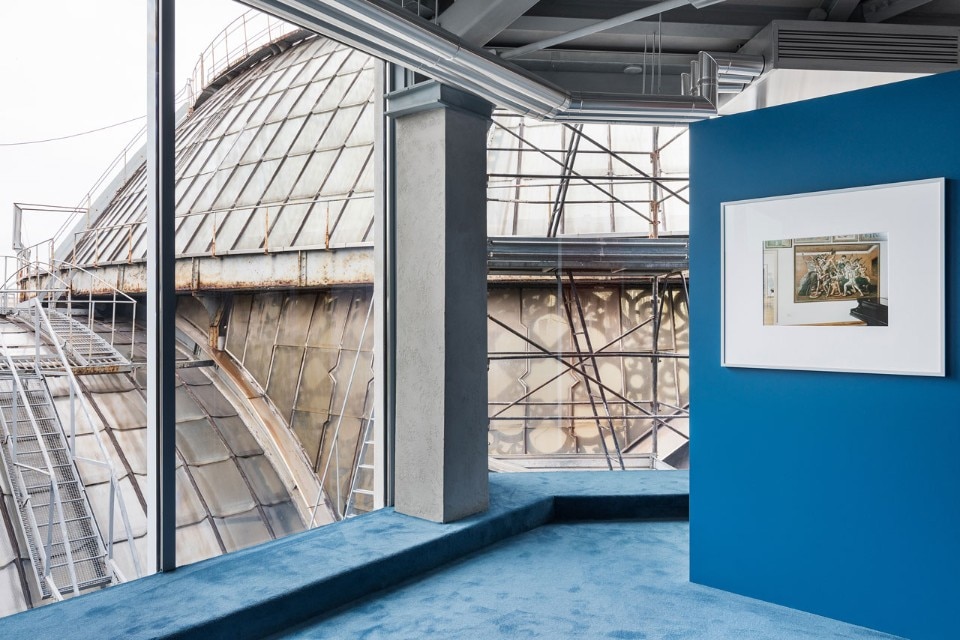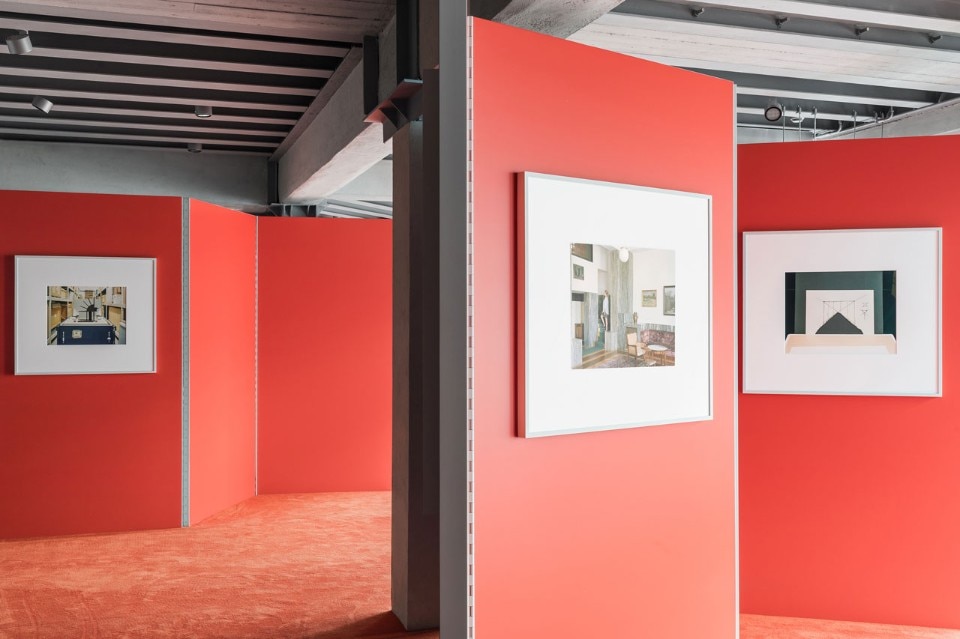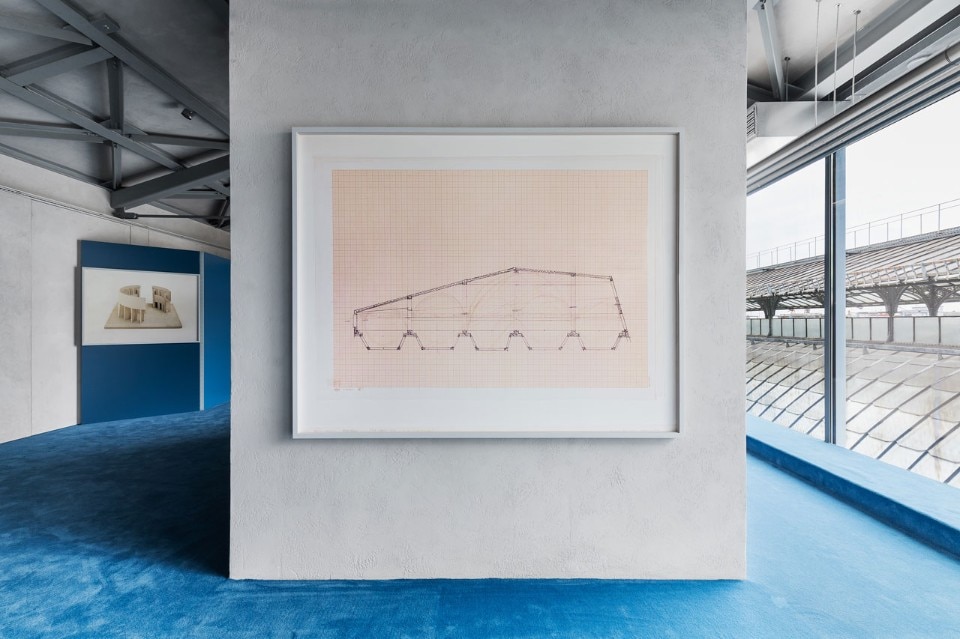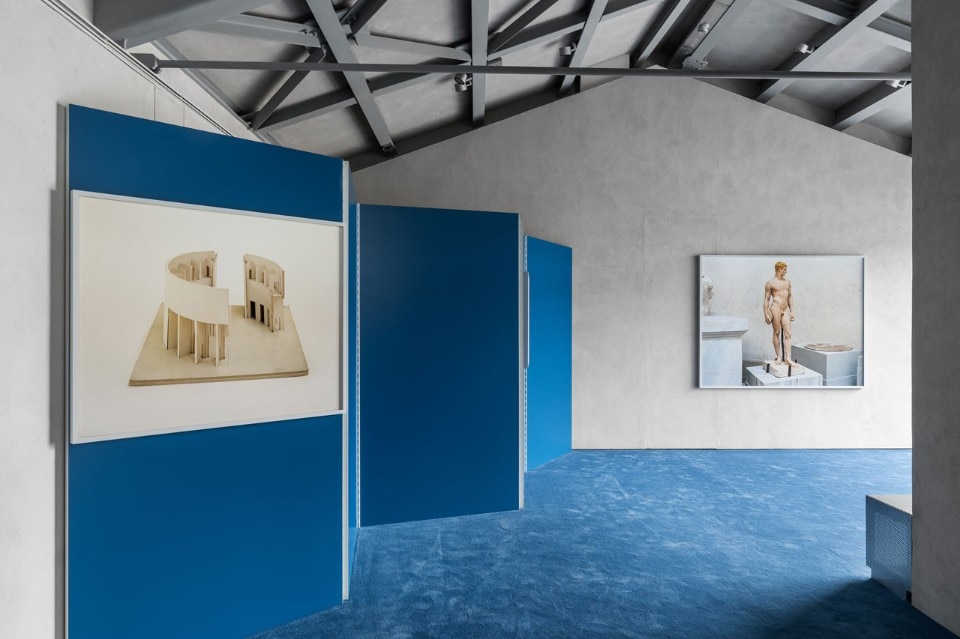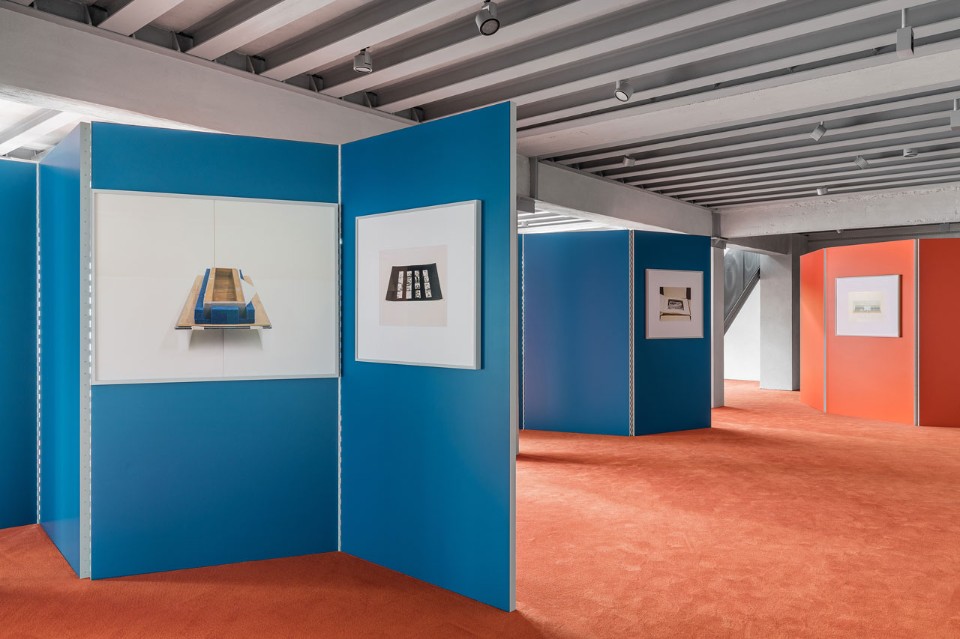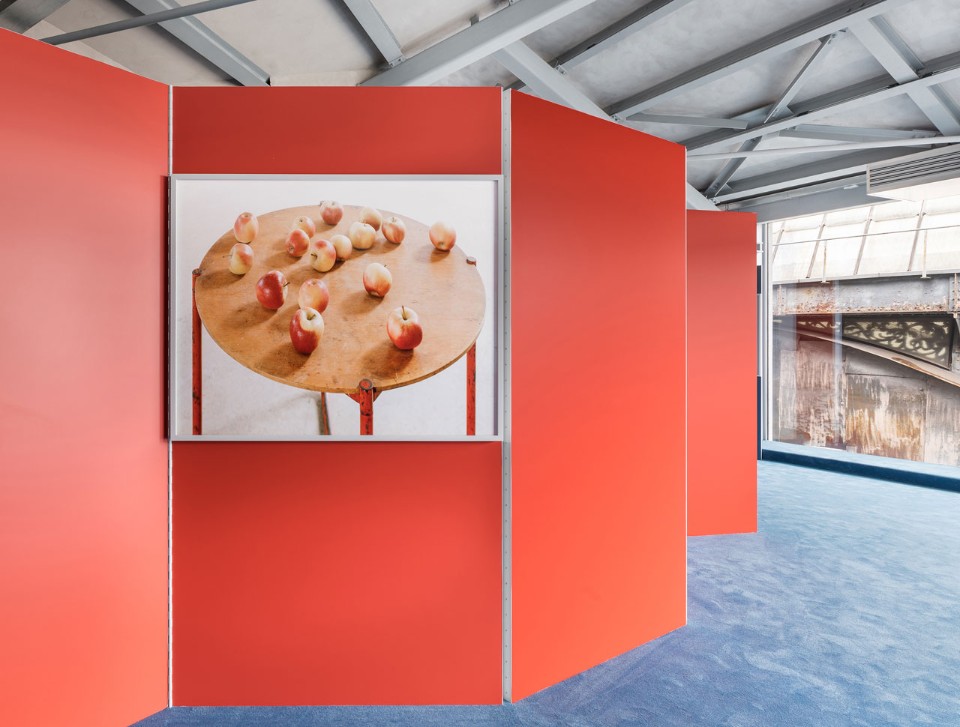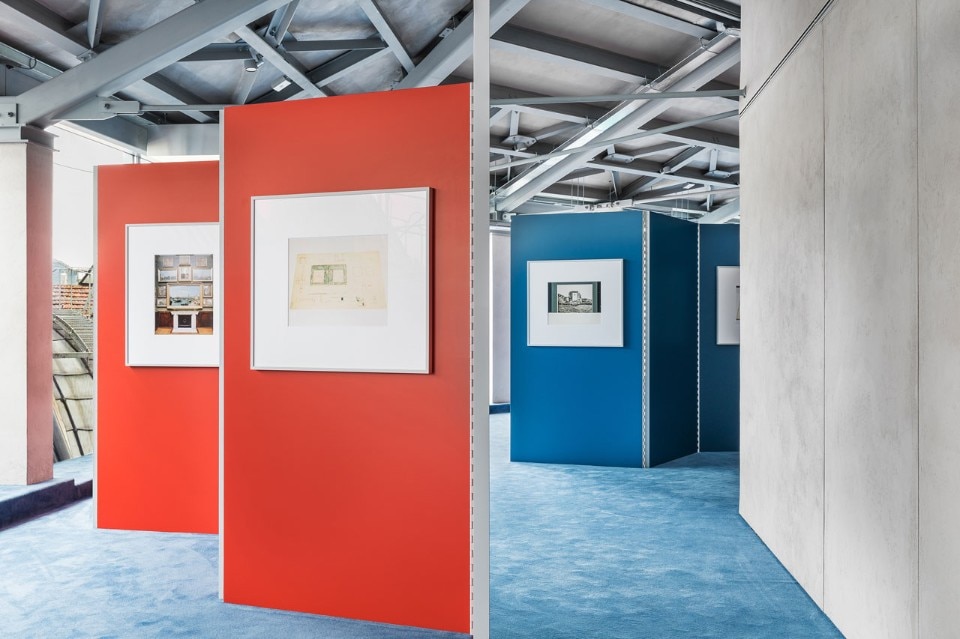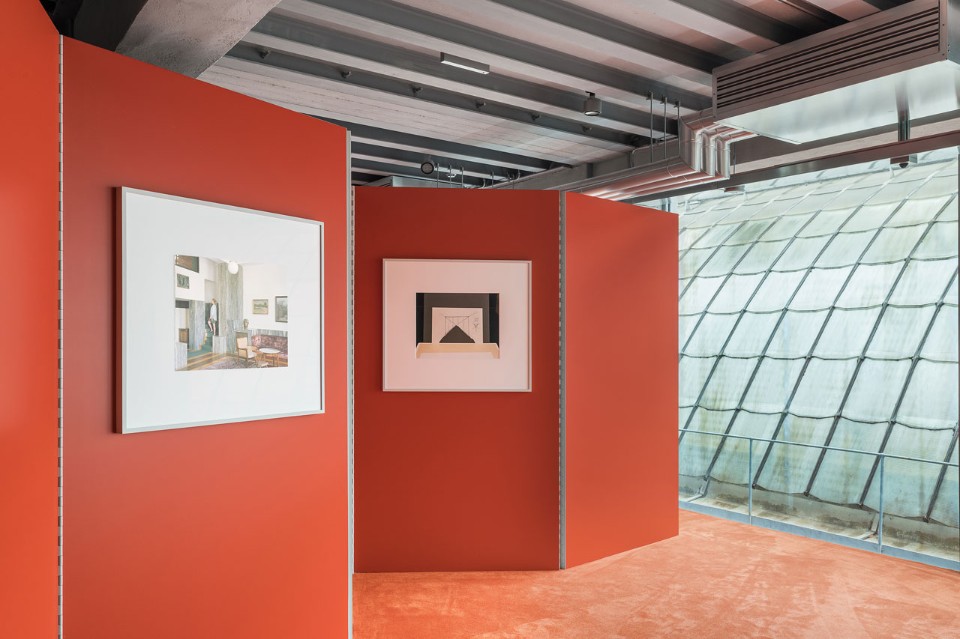It is clear that the underlying influence in the one-man exhibition by Stefano Graziani at the Prada Foundation Osservatorio - a space in Milan dedicated to contemporary photography - is architecture (and the fact that Graziani is an architect could be one explanation). This is an exhibition which does not invite linear viewing, nor is it to be seen only once, but rather “through”, we may call them, even if it sounds a little illogical “exercises of vision between perception and representation”. It could be thought to begin with the legendary figure of the naked Lucrezia, with one arm folded behind her blonde head and the other holding the dagger to her heart. And it ends, on the floor above, with a platinum Palamede, standing naked and without the fig-leaf, depicted full-figure with discus in hand (these are the most photographed and shared images by visitors to the exhibition). The first is a work from the Kunstmuseum in Basel, painted by Lucas Cranach the Elder in the 16th century. The second is a statuette by Canova sculpted two centuries later and displayed 600 kilometres further south, as part of the collection of the Antonio Canova museum and cast gallery in Possagno. But all of this – who is who, what is what – is politely ignored by Graziani. When he is questioned about the subjects of his photographs (which, in searching for a common theme, can all be included in the classic category of still-life), he answers that, as far as the content is concerned, he is not particularly enamoured. His photographs are based, above all, on a series of formal combinations. In their representation through his vision, images seem to be stripped of the ease in which they could be viewed, of their so-called clarity, therefore presenting them for patient investigation and discovery, at the same time without depriving them of their charm and colour.
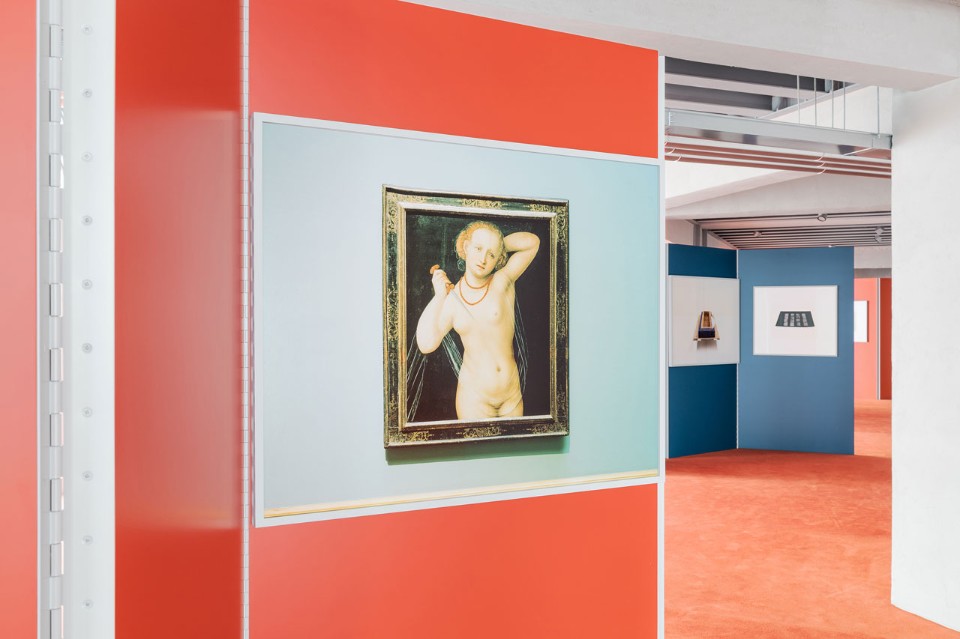
Thus, Osservatorio presents, on alternating blue and red panels – reflecting the blue and red carpet (the exhibition has been set up by the Belgian studio OFFICE KGDVA – 36 photographs taken in optical white and then scanned; some are views, while others are shots of – we can say – objects taken from collections, archives and museums, unknown and inaccessible to most. To give one an idea: a souvenir-album of Pompei from the late-1800s; the photograph of a temple dedicated to the Pharaoh Ramses; prototypes, drawings, perspectives – the names presented are those of (artists and photographers) – Aldo Rossi, Adolf Loos, Gordon Matta-Clark, Giorgio Sommer and so on – and come, mostly, from the Canadian Central for Architecture (CCA) in Montreal, as well as from other places, wide-ranging and far-apart, which are, as well as those previously cited, The Castelvecchio Museum in Verona, the Insel Hombroich Museum in Neuss, the Muzeum hlavního mesta Prahy in Prague, and the John Soane's Museum in London, where the first photograph was taken, although it seems that no particular pilgrimage to these places was planned.
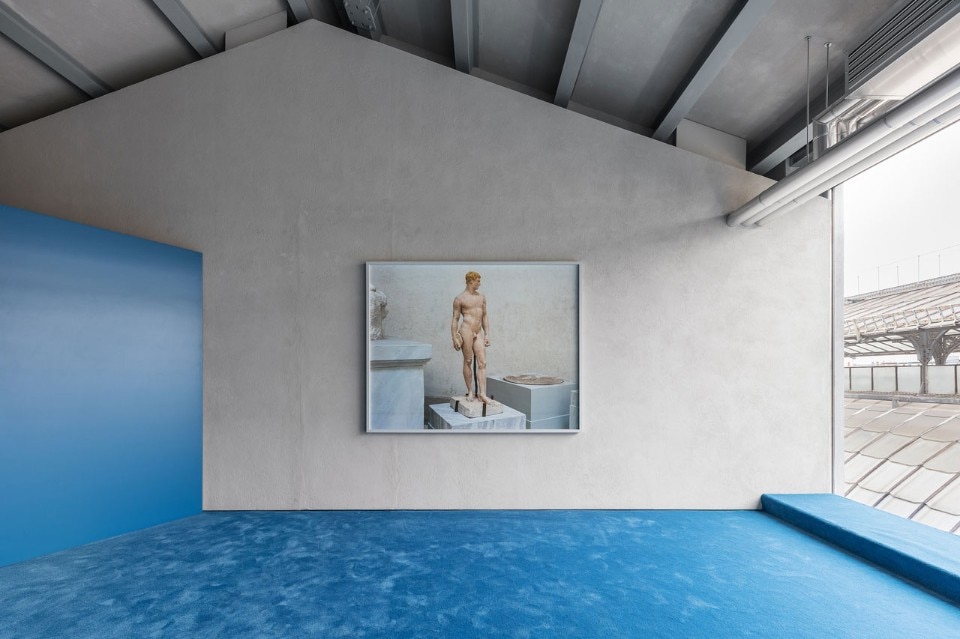
“We have combined two guidelines”, explains the curator Francesco Zanot. “The first regards documentation. We pass from one image to another according to our knowledge of that which is depicted. The second shifts the reading from what to how. This regards a non-documentation level”. When one asks them what this means exactly, both artist and curator indicate a photograph displayed on the lower floor (red carpet), which shows, they tell me, the prototype of a table designed by Mies van der Rohe, on which the artist has placed a few apples. On the floor above (blue carpet), the same photograph with the same apples can be found, except that they have been shifted by a few centimetres. It goes without saying that, with an apple, one can disturb a great number of people – from Paul Cézanne to Paul Graham, with his Unreasonable Apple. “The table with the apples returns to its role as support, completely prevented (literally forbidden) by the rules of museum exhibiting”, says Zanot. “The nature of the photograph as a document-non-document here emerges unmistakably, and the second state is underlined here, for example, by the fact that these photographs by Graziani have perspectives which are not zenthial, but are, instead, slightly offset, or interrupted by reflections, or slightly crooked, or crossed by spectral figures”. This is the origin of the title of the exhibition: “Questioning Pictures”.
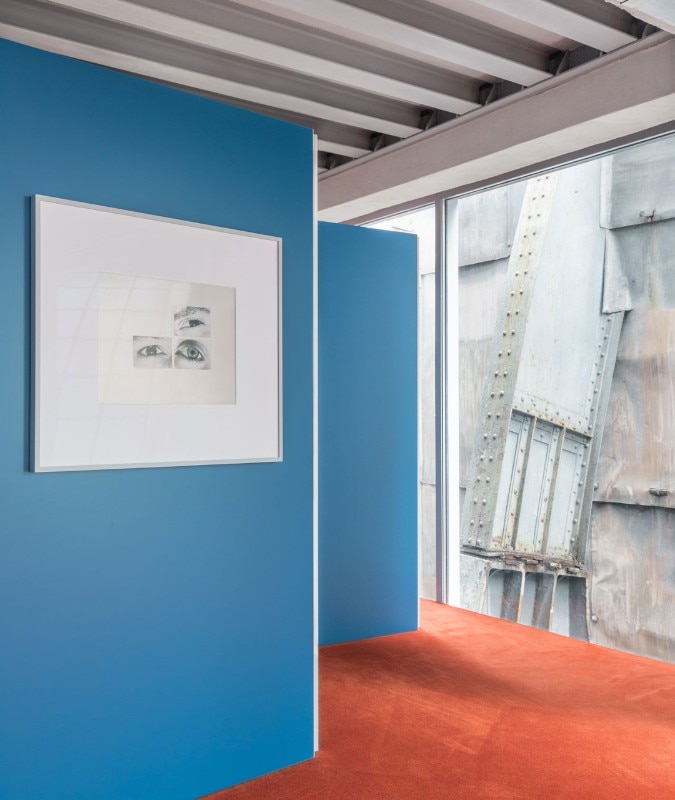
The captions, another subject which has always been problematic for Graziani, are pure quotations of the information provided by the institutions; for example, in the case of the table with the apples: Natura morta, MR Table, Thonet, Ludwig Mies van der Rohe, 1935, Stiftung Insel Hombroich Neuss. Naturally, he focuses heavily on the fact that he has worked in disciplined contexts, such as museums, veritable bastions of visibility. The image chosen for the poster is a model of the never-produced Fun Palace by Cedric Price, an idea of a potential construction. I ask Graziani if there is anything that he has been unable to photograph. “Yes”, he answers, “the Thonet factory warehouse in Frankenberg”. And if there is a work which stands out from the others. “Il viaggio da Karnak all’isola di Philae was produced earlier and then included in the project” The photograph in question shows a capital without its column, laying on the ground, “an object which is just lying there”.
- Exhibition title:
- Questioning Pictures: Stefano Graziani
- Curator:
- Francesco Zanot
- Opening dates:
- 9 November 2017 – 26 February 2018
- Exhibition venue:
- Fondazione Prada Osservatorio
- Address:
- Galleria Vittorio Emanuele, Milan


